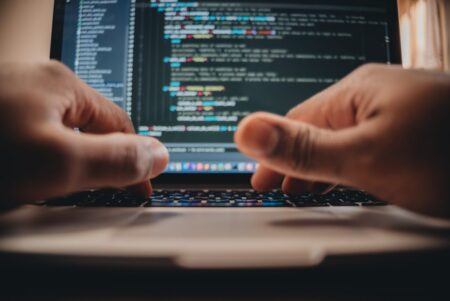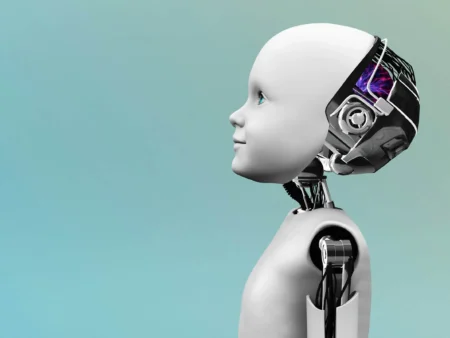- Gen AI can improve efficiency and effectiveness in various financial sector applications.
- In the next three to five years, gen AI has the potential to revolutionize banks.
- AI can even plan overall strategy and banks to adopt or be left behind.
Generative AI is the new frontier for scientific developments and the financial sector should not be left behind. Artificial Intelligence (AI) is now used by financial institutions to model analytics, automate manual tasks, and synthesize unstructured content, sector experts say.
“In the next three to five years, Gen AI has the potential to revolutionize banks…changing entire risk and compliance functions,” notes Rahul Agarwal, Andreas Kremer, Ida Kristensen, and Angela Luge in an article published by advisory firm McKinsey and Company.
In their paper, How Generative AI Can Help Banks Manage Risk and Compliance, the researchers and financial experts describe how Gen AI can improve efficiency and effectiveness in various financial sector applications.
The cited areas include regulatory compliance, financial crime, cyber risk, and complex projections like climate risk. According to the experts, AI can even do overall strategy planning “focused on high-priority use cases that align with business goals.”
Sounds like someone will be losing their job to a computer or, instead, to a software. That is the reality that is at hand: AI technology allows for the automation of services, including predictions of outcomes, so much that it makes the human error factor a liability at the workplace.
Why hire a human who can make mistakes if you can pay for AI that does multiple tasks seamlessly? “In the next five years, generative AI could fundamentally change financial institutions’ risk management by automating, accelerating, and enhancing everything from compliance to climate risk control,” the experts explain.
Generative AI, more commonly known as Gen AI, is the next level of Artificial Intelligence. Gen AI is a type of artificial intelligence that falls under the broad category of machine learning technologies.
“This technology is poised to become a catalyst for the next wave of productivity gains across industries, with financial services very much among them. From modeling analytics to automating manual tasks to synthesizing unstructured content, the technology is already changing how banking functions operate, including how financial institutions manage risks and stay compliant with regulations,” the article explains in part.
According to her, “banks can build a flexible, powerful approach to using gen AI in risk and compliance management and identify some crucial topics that function leaders should consider.”
More than changing the way that banks manage risks, Gen AI has the potential to move away from what bankers call “task-oriented activities” and instead move to “partnering with business goals” and, therefore, provide unprecedented strategic risk prevention.
Other than backroom functions, Gen AI is also taking over the front desk. Gen AI is handling new customer journeys and experiences with customers increasingly opting for remote service options.
“This does not mean job losses,” the article reassures rattled sector professionals.
“On the contrary…Gen AI will actually serve to free up risk professionals to perform other tasks that benefit the company like advise businesses on new product development and strategic business decisions, explore emerging risk trends and scenarios, strengthen resilience, and improve risk and control processes proactively.”
The team explains that the Gen AI advances could lead to the creation of entire AI-powered risk intelligence centers. These software powerhouses would serve all lines of defense for the banking and financial systems, including business and operations, compliance and risk functions, and audits.
“Such a center would provide automated reporting, improved risk transparency, higher efficiency in risk-related decision making, and partial automation in drafting and updating policies and procedures to reflect changing regulatory requirements,” she foresees.
“It would act as a reliable and efficient source of information, enabling risk managers to make informed decisions swiftly and accurately,” the experts conclude.
Already, you have gen AI virtual experts that can provide tailored answers based on a firm’s proprietary information and assets, exciting or scary. Either way, the future is here, and the experts say firms that do not adapt will be left behind.
“Banks’ risk functions and their stakeholders can develop similar tools that scan transactions with other banks, potential red flags, market news, asset prices, and more to influence risk decisions,” they advise.
Finally, according to the advisory firm, Gen AI could facilitate better coordination between the first and second lines of defense in risk management for banks and the financial sector.
“The improved coordination would enable enhanced monitoring and control mechanisms, thereby strengthening the organization’s risk management framework,” she concludes.
Also Read: Deel acquires rival payroll engine PaySpace, aiming to establish a presence in 100 markets
Gen AI in banking: The first wave of automated banking?
There are almost endless possibilities in the application of AI, and when it comes to the banking sector, of the many promising applications of Gen AI, here is a set of AI applications that banks are exploring for a first wave of adoption. These are regulatory compliance, financial crime, credit risk, modeling and data analytics, cyber risk, and climate risk.
So far, Gen AI is been considered for risk and compliance functions in three specific case types. First, you have what is called the virtual expert. You have already come into contact with this AI. The Chat Bot pops up on most websites now and prompts you to chat and ask any questions. Ring a bell?
“A user can ask a question and receive a generated summary answer that’s built from long-form documents and unstructured data,” the experts explain.
Then, you have manual process automation, where Gen AI performs time-consuming tasks. This means AI can be tasked to do repetitive, otherwise dull, and monotonous tasks for humans.
Then you have code acceleration. Here, Gen AI is used to update or translate old code or write entirely new code.
“Enterprises are using Gen AI as a virtual regulatory and policy expert by training it to answer questions about regulations, company policies, and guidelines,” she details.
“As a code accelerator, it can check code for compliance misalignment and gaps. It can automate checking of regulatory compliance and provide alerts for potential breaches,” the expert explains.
Gen AI to identify potential financial crimes
Gen AI can also be a security facility to identify potential financial crimes. According to the expert, it can generate suspicious activity reports based on customer and transaction information, which can red flag suspicious activities.
“By generating and improving code to detect suspicious activity and analyze transactions, the tech can improve transaction monitoring,” she explains.
In the same way, Gen AI is behind your credit risk assessment. It is AI that determines whether you qualify for a loan or not.
“By summarizing customer information, for example, transactions with other banks, to inform credit decisions, Gen AI can help accelerate banks’ end-to-end credit process,” she writes.
According to McKinsey, financial institutions already use the tech to generate credit risk reports and extract customer insights from credit memos.
“Gen AI can generate code to source and analyze credit data to gain a view into customers’ risk profiles and generate default and loss probability estimates through models,” she details.
In summing up the functions of AI in the banking and financial sectors, the expert notes that by checking cybersecurity vulnerabilities, Gen AI can be helpful in “red teaming,” which refers to simulating adversarial strategies and testing attack scenarios for banks and other firms.
“The tech can also serve as a virtual expert for investigating security data. It can make risk detection smarter by speeding and aggregating security insights and trends from security events and behavior anomalies,” she concludes.
That is the future of banking. Already, eliminating the man-to-man contact is becoming a norm. Recall seeing the ‘Don’t stand inline, go online’ banner in your bank? That is all part of AI’s unfolding, exciting, and scary applications in your day-to-day life.











